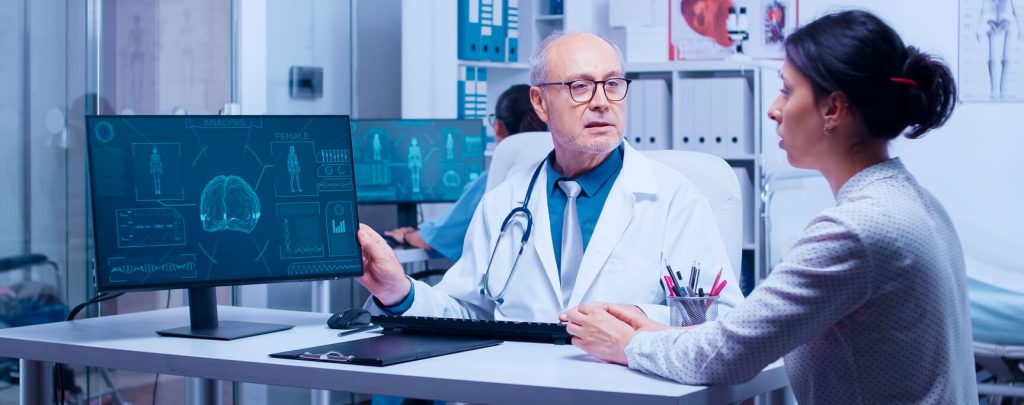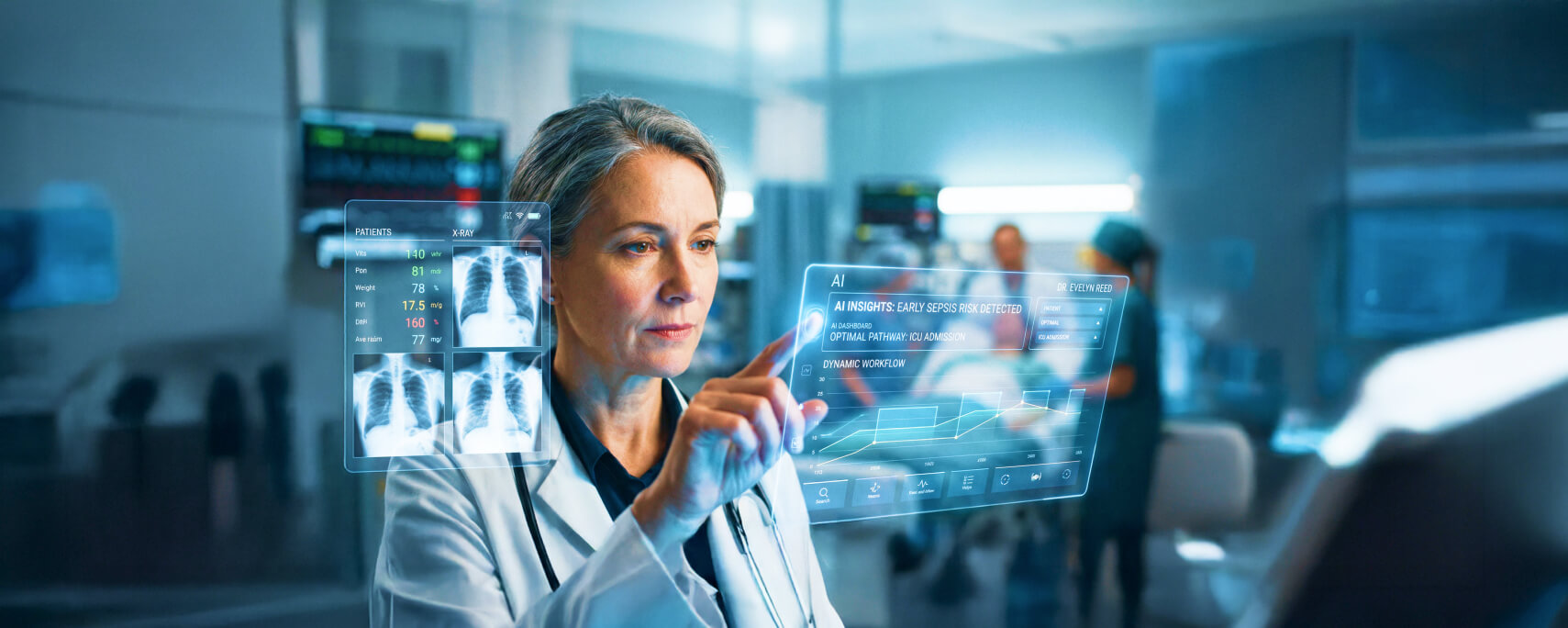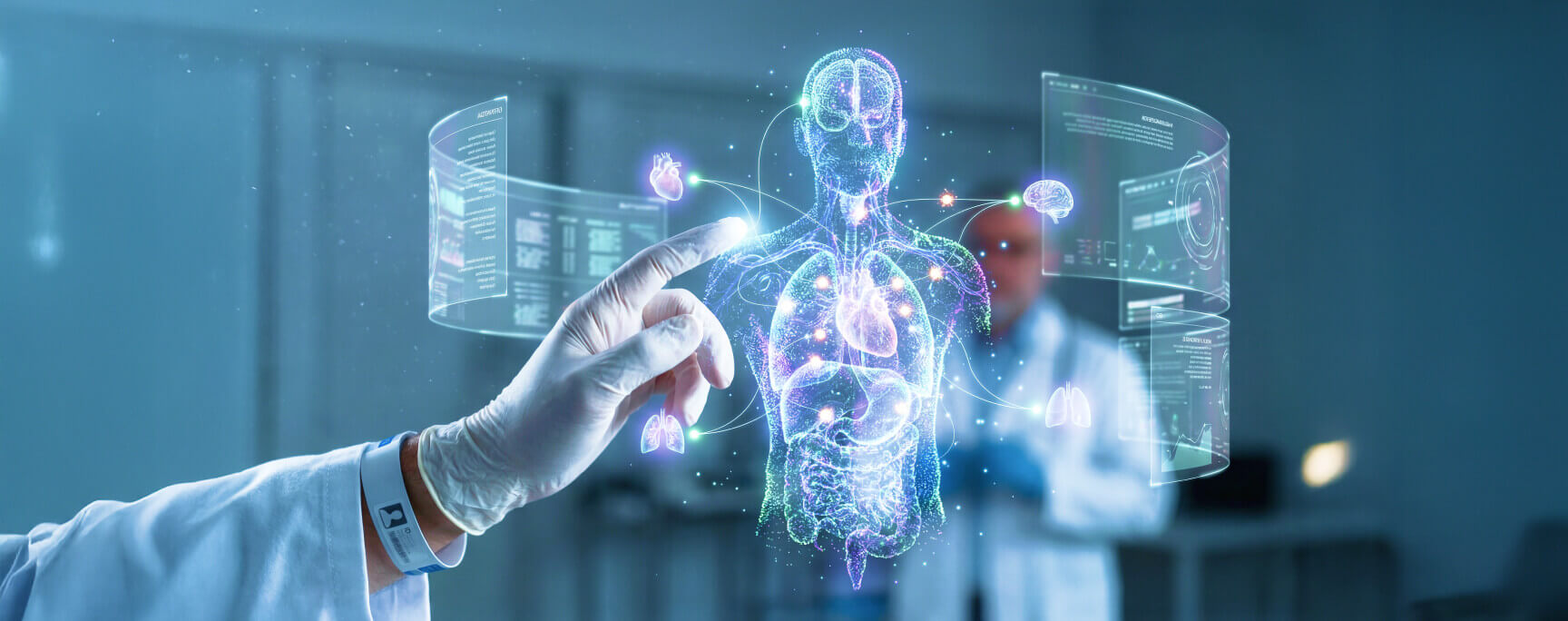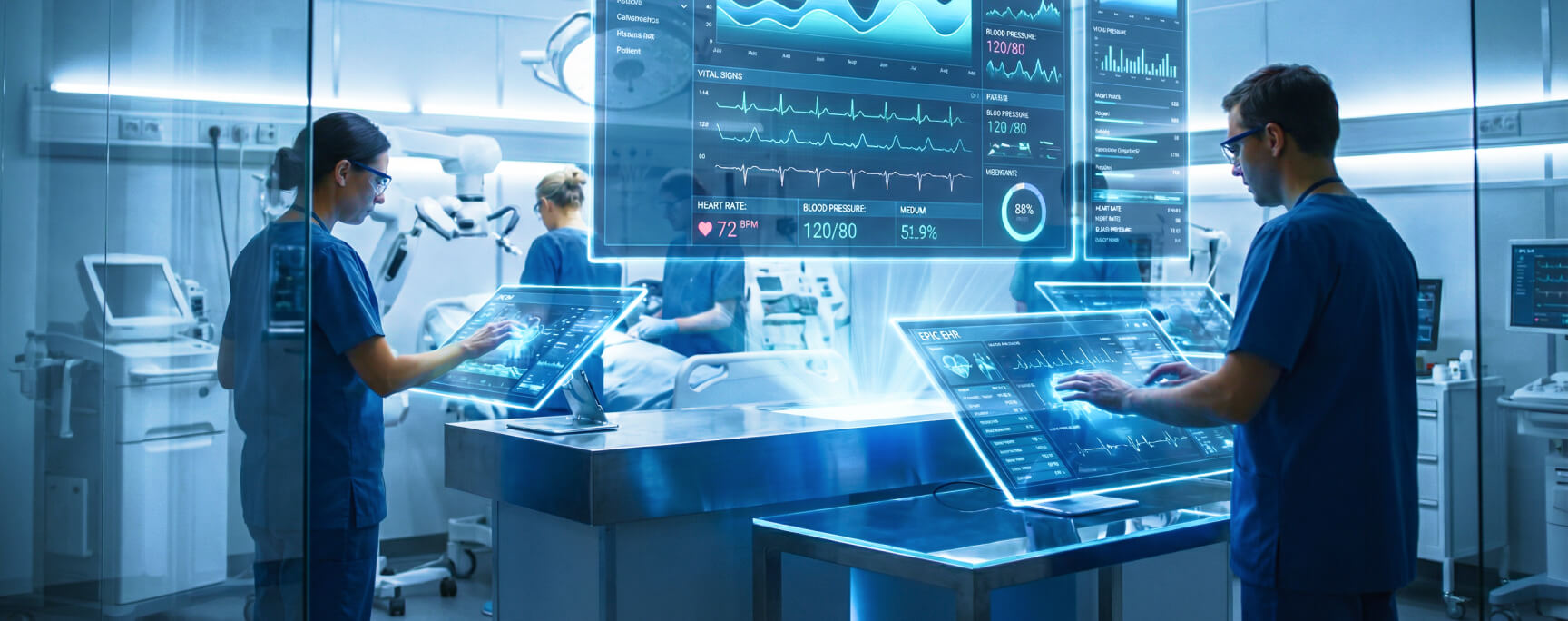Unlock the Power of EHR and EMR: Enhancing Patient Care Through Technology
Introduction
In today’s rapidly evolving healthcare landscape, technology is a driving force behind transformative patient care. Central to this transformation is the adoption of Electronic Medical Records (EMR) and Electronic Health Records (EHR), which enable the seamless collection and sharing of patient data. For MedTech companies, the integration of these systems offers unprecedented opportunities to create smarter, more connected medical devices that support real-time data exchange and improve clinical outcomes.
As the healthcare ecosystem increasingly relies on data interoperability, MedTech leaders can unlock the full potential of their devices by ensuring that they are equipped to integrate with EMR/EHR systems. We will explore how EHR and EMR adoption enhance patient care and offer MedTech companies an edge in developing the next generation of medical devices.
Understanding the Role of EMR and EHR in Healthcare
An EMR is a digital version of patient records typically confined to a single healthcare provider or facility. It streamlines clinical workflows, enhances record-keeping accuracy, and supports internal diagnostics. However, an EHR provides a holistic, patient-centered view that spans across providers and care settings, supporting interoperability and facilitating collaboration among healthcare teams.
EMRs are primarily limited to specific providers, but EHRs represent a much broader ecosystem where interoperable medical devices, healthcare software, or digital health solutions can play a key role in supporting real-time patient monitoring and data sharing. Such devices or solutions that talk with EHRs ensures continuum of care that follows patients across various healthcare environments.
EHR and EMR Integration: The Transformative Impact on Patient Care
The EHR and EMR adoption has redefined how care is delivered, monitored, and improved. For MedTech companies, this is an opportunity to support the digital transformation of healthcare by creating devices that fully synchronize with these systems, ultimately enhancing patient care.
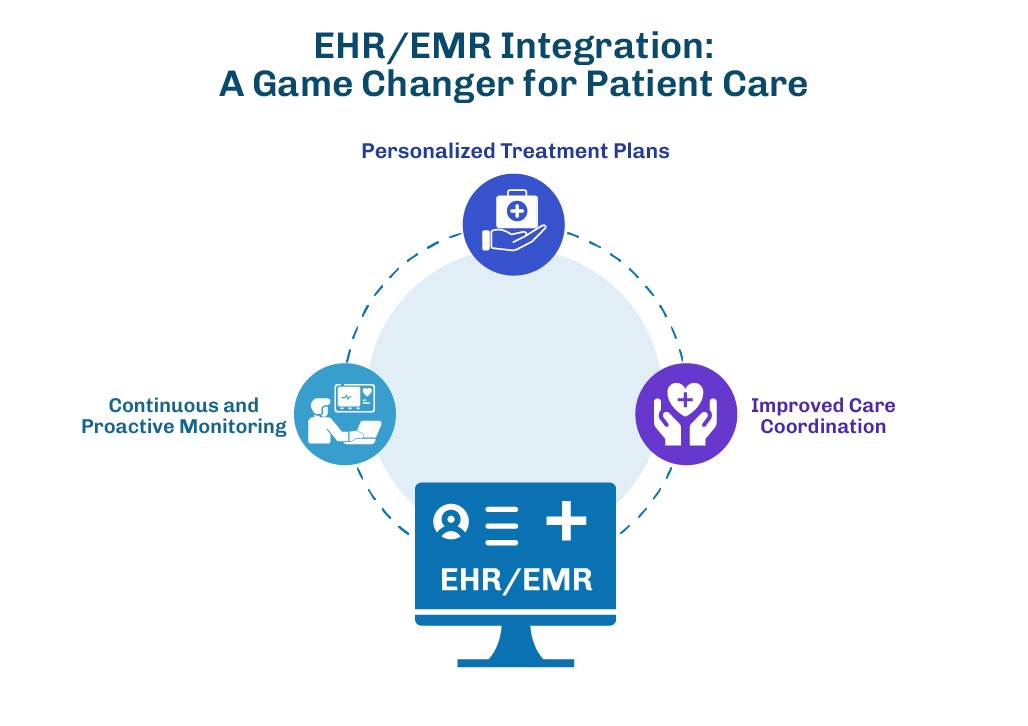
- Continuous and Proactive Monitoring: Medical devices that feed real-time patient data directly into EHRs allow healthcare providers to monitor patients continuously, improving early detection of potential complications. Remote monitoring devices, when integrated with EHRs, enable doctors to intervene early, reducing hospitalizations and improving patient outcomes.
- Personalized Treatment Plans: EHR data helps build comprehensive patient profiles that consider not only the present condition but also historical data. Devices and digital health solutions that can talk to EHRs allow more tailored treatment, considering a patient’s entire medical history, lifestyle, and real-time health status.
- Improved Care Coordination: When multiple healthcare providers and specialists can access the same EHR, they have a more coordinated approach to a patient’s treatment. For complex conditions, this seamless sharing of data can prevent miscommunication, reduce errors, and ensure a holistic approach to care.
The Technologies Powering EHR and EMR Integration
EHR and EMR systems rely on a series of technical frameworks and standards that ensure secure and accurate data sharing.
-
Data Interoperability:
Effective EHR and EMR integration hinges on robust interoperability, enabling seamless data exchange across diverse systems, software solutions, and devices. Key healthcare standards like FHIR (Fast Healthcare Interoperability Resources) and HL7 facilitate the secure, structured exchange of healthcare data between medical devices, hospital systems, and providers. However, hospitals and healthcare organizations also utilize a range of more general data formats such as XML, CSV, and XLS for data storage and exchange, ensuring flexibility in both legacy systems and newer infrastructures.
-
Cloud Infrastructure and On-Premise IT Solutions:
Most modern EHR systems operate on cloud-based architectures, which enable scalable, flexible, and geographically distributed access to healthcare data.
Leading cloud providers like Amazon Web Services (AWS) and Microsoft Azure offer HIPAA-compliant cloud environments where healthcare providers can store, access, and analyze EHR data. For MedTech firms, this infrastructure means their devices can transmit data from any location, without requiring on-premise server infrastructure.
Healthcare IT companies like Epic, Cerner, and Allscripts offer a range of cloud-hosted and on-premise solutions, including EHR and EMR systems, alongside other digital health solutions. These platforms offer integrated APIs that enable seamless interaction with third-party devices, facilitating secure data exchange and real-time updates across healthcare systems. -
Data Encryption and Security Protocols:
Given the sensitive nature of patient data, robust security protocols such as end-to-end encryption, multi-factor authentication, and audit trails are critical. MedTech devices must be built with cybersecurity in mind, ensuring compliance with HIPAA, GDPR, IEC 62304 & ISO 13485, SOC 2, HITRUST, and other regulations to protect patient privacy while facilitating seamless data integration.
Data exchanged between medical devices/digital solutions and EHR systems is typically protected using end-to-end encryption (E2EE). TLS (Transport Layer Security) protocols are implemented to secure data in transit, ensuring that patient data is protected from unauthorized access during transmission. -
Middleware Solutions for System Connectivity:
Solutions like Mirth Connect, NextGen Connect, and Rhapsody serve as intermediaries, enabling communication between disparate healthcare systems. These interface engines translate and map data across multiple formats such as HL7, FHIR, XML, CSV, and XLS, ensuring that device data flows seamlessly into EHR systems, even when different formats are used.
In addition to handling data formats, these engines support communication protocols like DICOM (Digital Imaging and Communications in Medicine). DICOM is a protocol widely used for transmitting medical imaging data, such as X-rays and MRIs, between PACS (Picture Archiving and Communication Systems) and DICOM-enabled viewers. This ensures that medical imaging data can be securely accessed and viewed by healthcare professionals in a standardized way. -
Advanced Data Analytics and AI
The real value in integrating EHR and EMR systems with devices or software is often realized through data analytics and AI-powered insights. These technologies can help extract actionable insights from the massive amounts of data collected by devices and stored in EHRs.
With ML models and AI in healthcare, EHRs can analyze real-time device data to predict potential health risks, detect anomalies, and recommend personalized interventions.
Medical devices continuously generate high volumes of structured and unstructured data (e.g., vitals, imaging, diagnostic reports). Big data platforms such as Apache Hadoop or Apache Spark are used with EHRs to process, analyze, and derive insights from this data. -
API-Driven Ecosystems
APIs are critical in ensuring that medical devices can communicate with EHR systems seamlessly.
RESTful APIs allow devices to send data in real time to cloud-hosted EHR systems. For instance, a blood glucose monitor might send glucose readings to an EHR every few minutes, allowing doctors to track trends and adjust treatment accordingly.
Addressing Compliance, Security, and Data Privacy in EHR and Medical Devices
Ensuring compliance with HIPAA, GDPR, SOC 2, HITRUST, and other regulatory standards is paramount. The growing complexity of healthcare data especially with the integration of medical devices—requires robust security measures to protect sensitive patient information. Solutions must be built with end-to-end encryption, secure APIs, and multi-layered access controls to safeguard patient data.
In addition to security, devices must also respect data ownership and patient consent. MedTech companies must design products that enable secure, compliant data sharing across EHR systems while ensuring transparency on how patient data is used. As data breaches become more common, companies that prioritize security and compliance will gain trust within the healthcare industry, giving them a competitive edge.
Overcoming EHR/EMR Integration Challenges for MedTech Companies
While the benefits of EMR and EHR implementation are clear, challenges remain. Legacy systems, data silos, and non-interoperable software environments often slow down the adoption of connected devices. For MedTech companies, overcoming these hurdles requires adopting open standards like FHIR, as well as implementing modular integration frameworks that allow for gradual system upgrades.
Cloud-based EHR solutions offer an alternative by enabling scalable and flexible integration options, allowing MedTech firms to reduce operational costs while maintaining a high level of functionality. The adoption of cloud platforms can make integration faster and more efficient, improving time to market for new devices while ensuring seamless data exchange with healthcare systems.
The Future of EHR/EMR Integration
The future of EHR/EMR integration lies in AI, Machine Learning, and IoMT (Internet of Medical Things). With these technologies we can personalize healthcare solutions that adapt to the evolving needs of patients. By analyzing the wealth of data contained in EHR systems, devices can provide tailored recommendations and support real-time decision-making for healthcare providers.
Wearables and connected devices will continue to drive growth in real-time health monitoring, allowing patients and providers to benefit from continuous, remote care. This opens new opportunities for delivering high-quality care to underserved populations or those in remote locations through telemedicine platforms integrated with EHR systems.
The future also embraces the potential of blockchain technology for secure data exchange. By utilizing blockchain, MedTech firms can facilitate tamper-proof sharing of health data, thereby enhancing trust in their devices and solutions.
A Final Word
In a healthcare environment that prioritizes patient outcomes and data interoperability, the integration of EMR and EHR systems with medical devices, digital health solutions, or healthcare software is critical. For MedTech leaders, investing in solutions that leverage these systems can not only enhance patient care but also lead to the development of smarter, more connected devices that align with the future of healthcare.
Are you seeking a partner to maximize healthcare innovation with seamless EHR/EMR integration? Look no further. Connect with us today to explore your requirements.
About Dash

Dash Technologies Inc.
We’re technology experts with a passion for bringing concepts to life. By leveraging a unique, consultative process and an agile development approach, we translate business challenges into technology solutions Get in touch.
